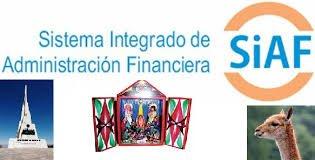Posted by Gerardo Uña1
Latin America is one of the regions of the world where Financial Management Information Systems (FMIS) are widely used. By 2011 the World Bank had completed work on 55 FMIS projects, of which 25 were located in Latin America.2 This trend began in the mid-1980s, when the SIAFI in Brazil (1986) and the SIGMA in Bolivia (1989) were developed. In the 1990s, systems were developed in countries such as Argentina, Paraguay and Uruguay, and more recently in Chile, Colombia, El Salvador, Guatemala, Honduras, Mexico, Nicaragua, and the Dominican Republic. In the meantime, there have been huge advances in technology and the conceptual design of these systems. Many countries are now looking to modernize the systems they first developed 20 or 30 years ago.
Looking across the region, four main approaches have been taken to designing and implementing new FMIS or modernizing existing systems. In this article, I will review the advantages and disadvantages of these different approaches.
1.- “In house” development. Under this option, the government, through a project management team, is directly responsible for the system development. Much of the work, however, is contracted out to consultants with various skills and profiles, such as systems analysts and developers. The work of the project team involves a range of activities: i) selecting, hiring and managing the individual consultants; ii) leading the consultants’ activities; iii) ensuring the quality of the software development process; iv) conducting functional and performance tests; and v) defining and executing the maintenance strategy once the system is implemented. In turn, under this approach, the government would assume the full cost of any adjustments and modifications that may be identified after the software has been installed. The in-house development option was common during the last decade in countries such as Peru, Honduras and Uruguay, but has become less popular because the implementation period tends to be long and the associated costs are high. The project team set up inside the Ministry may also be difficult to disband once the project has been completed.
2.- Development through consulting firms. Under this approach, the government outsources the project development function to one or more consulting firms, while retaining overall control of the project. The government is responsible for: i) defining the profile and terms of reference of the consultants required for the system development (functional and technological); ii) managing the contracts with these firms; iii) carrying out functional and performance tests to ensure that the software systems meet the required standards; and iv) defining and executing the maintenance strategy once the system is implemented. As with the previous option, the cost of any modifications to software systems after the project has been implemented are borne by the government. The consulting firms are responsible for: i) hiring and managing technical experts with sufficient skills and experience to develop the project; and ii) complying with all requirements of the service level agreements (SLAs) with the government. Although it is usual for consulting firms to be hired, there are other possibilities. In Brazil, for example, the University of Brasilia helped develop the SIOP, and in Argentina, the Universidad Nacional de la Plata participated in the development of the e-SIDIF.
3.- Outsourced development. Under this approach, the development of the system is outsourced to a software factory developer. The outputs of the system are precisely defined, and the developer works within an agreed budget. This development model requires the project team to have strong institutional capacities to elaborate the detailed specifications of the system. The government team is responsible for: i) defining the main functional and technical features, which are generally included in the conceptual design of the system; ii) supporting the software developer during the design and development process; iii) testing and validating the modules and other outputs delivered; iv) applying the quality assurance criteria for the delivered products, both individually and for the complete system. The main responsibilities of the software developer include: i) achieving the SLAs with the government that require the components of the system to meet agreed technical standards, and to be delivered on time; ii) establishing methodologies to ensure the required software quality; iii) correcting any software problems related to errors or malfunctioning during the guarantee period; and iv) providing the hardware and software infrastructure needed for developing and testing the system. This option was used in Chile for the development of the SIGFE 2.0.
4.- Parameterization3 of a “World Class solution”.4 This approach is generally based on an Enterprise Resource Planning (ERP)5 model. Within this alternative, the time period for implementing the project should be shorter than under the previous options, and its overall cost may be lower. The responsibilities of the government’s project team include: i) defining the conceptual model of the system; ii) supporting the consulting firm in the parameterization process; iii) preparing the required SLAs and managing their implementation; and iv) testing and validating the delivered outputs. The consulting firm is responsible for: i) defining the parameters of the system; and ii) delivering the agreed outputs according to the requirements of the SLAs. The consulting firm also bears the cost of any software adjustments that result from errors or malfunctioning of the system during the guarantee period. This development strategy has become common in African countries and the Middle East, as well as in advanced countries such as France, Germany and the United Kingdom. New projects are also being developed in Panama and Nicaragua using this approach.
To conclude, each approach has its pros and cons. However, the first option faces more difficulties than the others, especially regarding the challenge of containing costs within the agreed budget and completing the work within the allotted time period. The other three options are more likely to be successful in developing the FMIS according to the original plan, but they require strong leadership and a highly capable project team. Building such a capability remains a challenge for many Latin American countries in modernizing their FMIS.
1 Economist, Information Technology Coordinator, Ministry of Finance, Chile. The author is grateful to Richard Allen, Mario Pessoa and Israel Fainboim, all from FAD, for their valuable comments.
2 See C. Dener, J. Watkins and W. Dorotinsky. 2011. Financial Management Information Systems: 25 Years of World Bank Experience on What Works and What Doesn’t. Washington DC: World Bank.
3 The process of assigning specific values to the main variables of the information systems, such as the chart of accounts, the budget classification and organizational charts, which defines the correct functioning of the FMIS.
4 Information systems that achieve a standard of design, performance, quality, and customer satisfaction in line with good international practice.
5 Business management software, which is usually a suite of integrated applications that organizations can use to store and manage data across the entire range of business activities and operations.
Note: The posts on the IMF PFM Blog should not be reported as representing the views of the IMF. The views expressed are those of the authors and do not necessarily represent those of the IMF or IMF policy.








